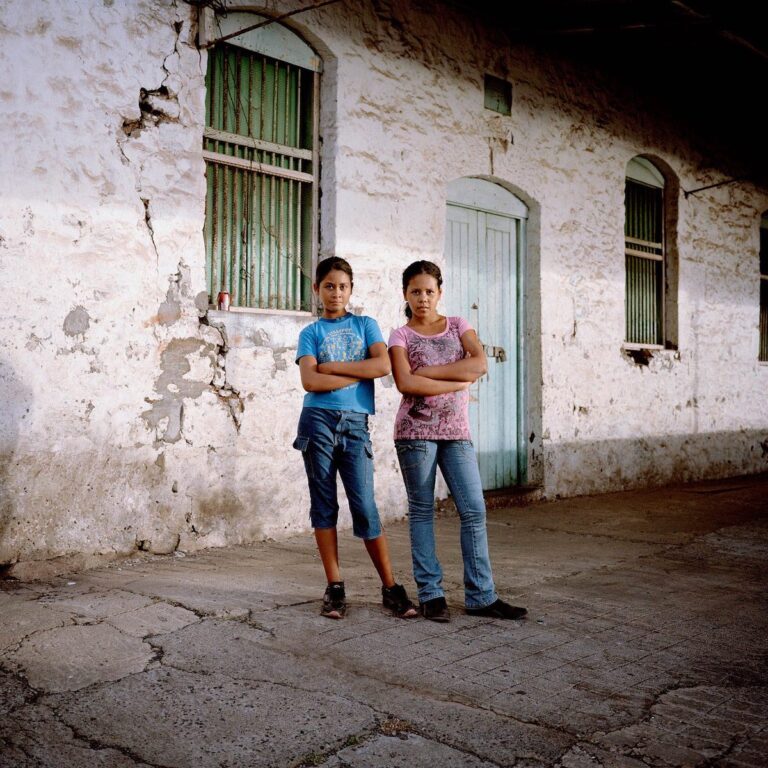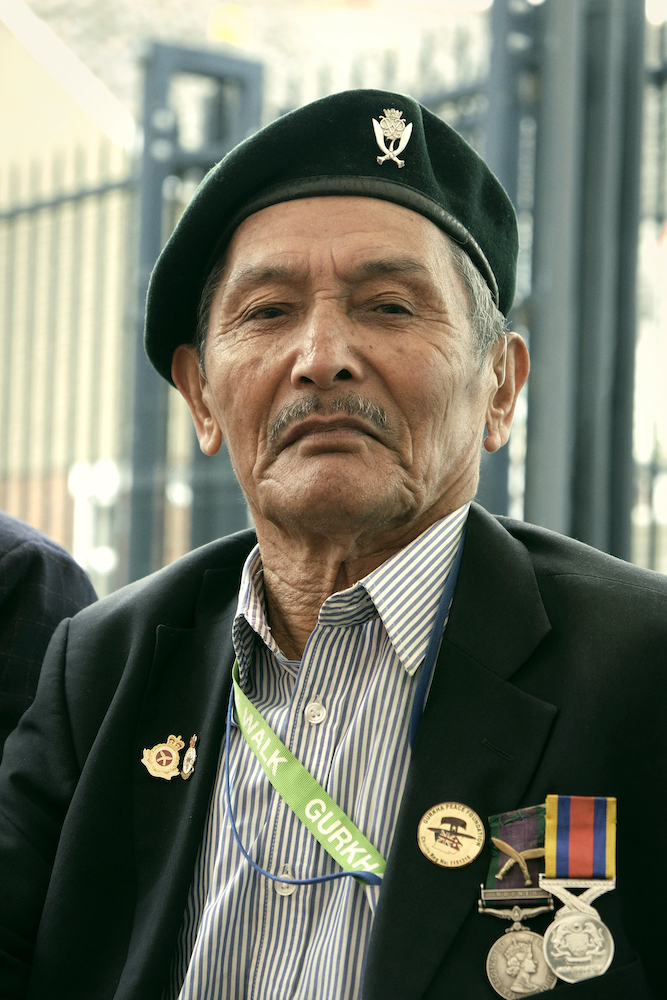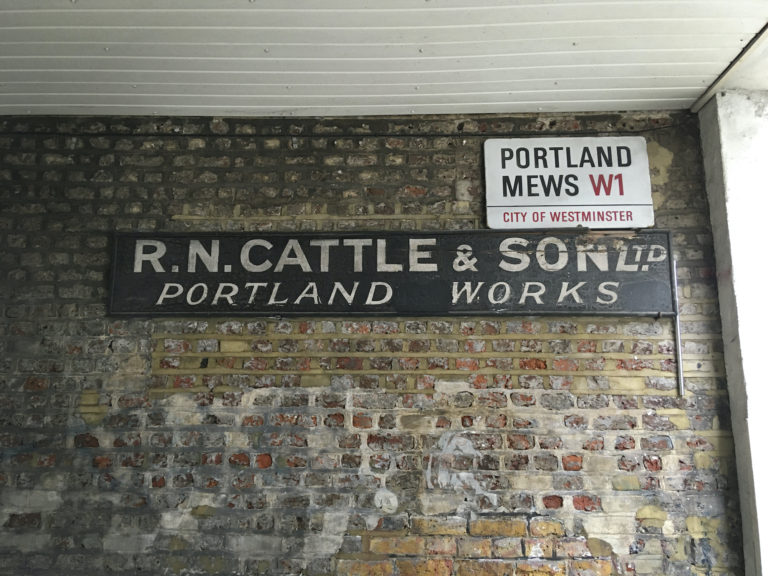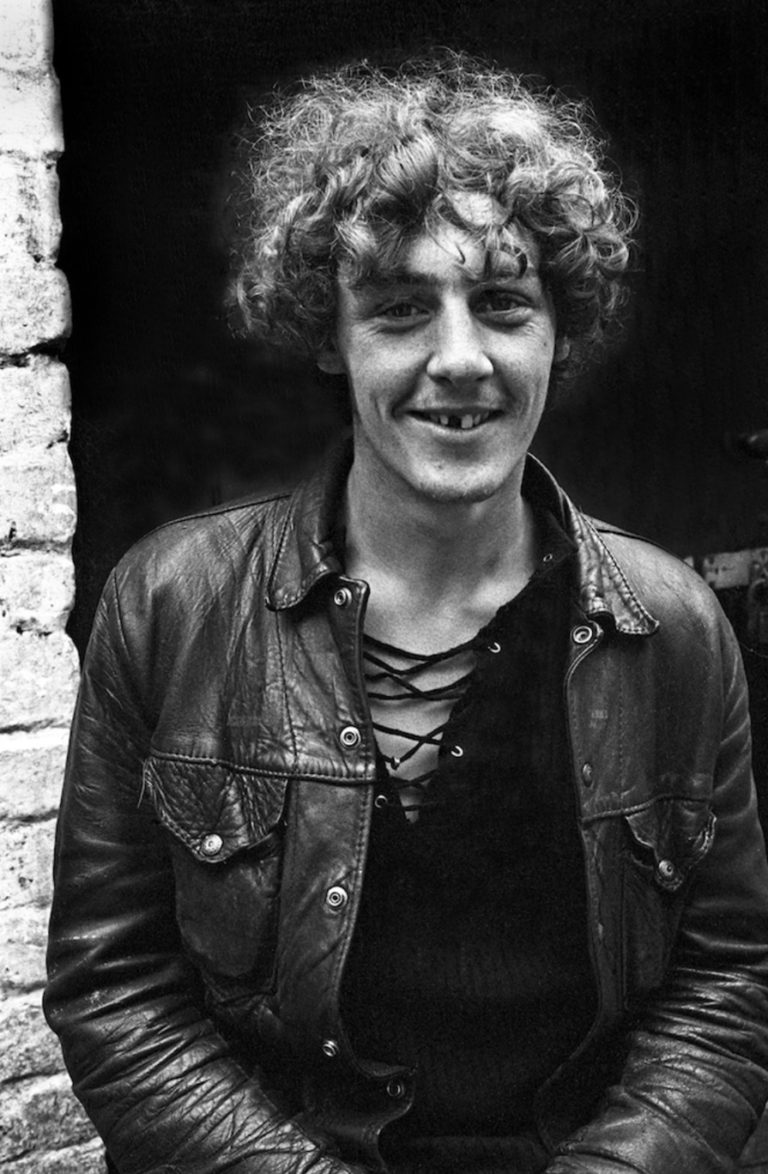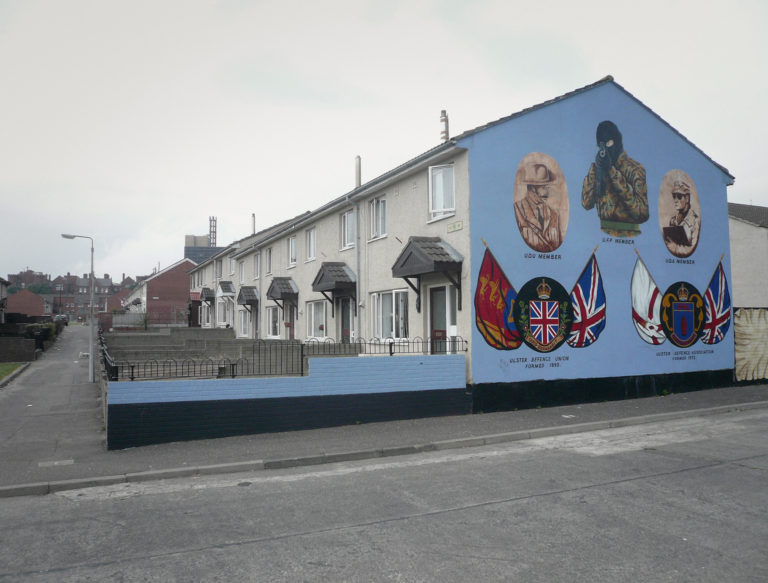GARLAND DAY I Castleton, Derbyshire, England
Paganism, pole dancing and King John.
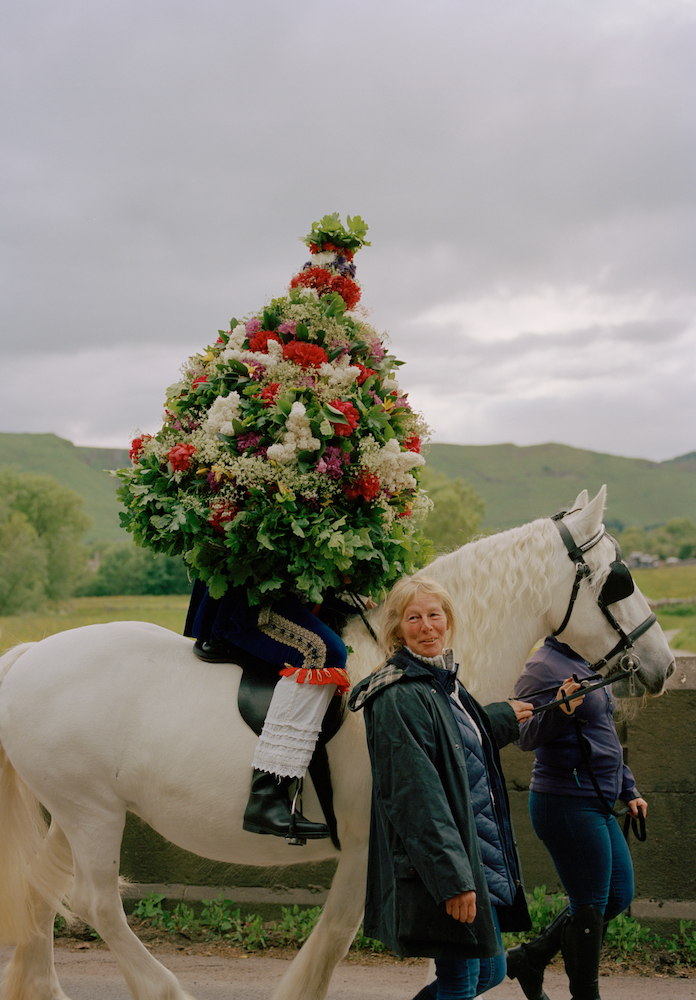
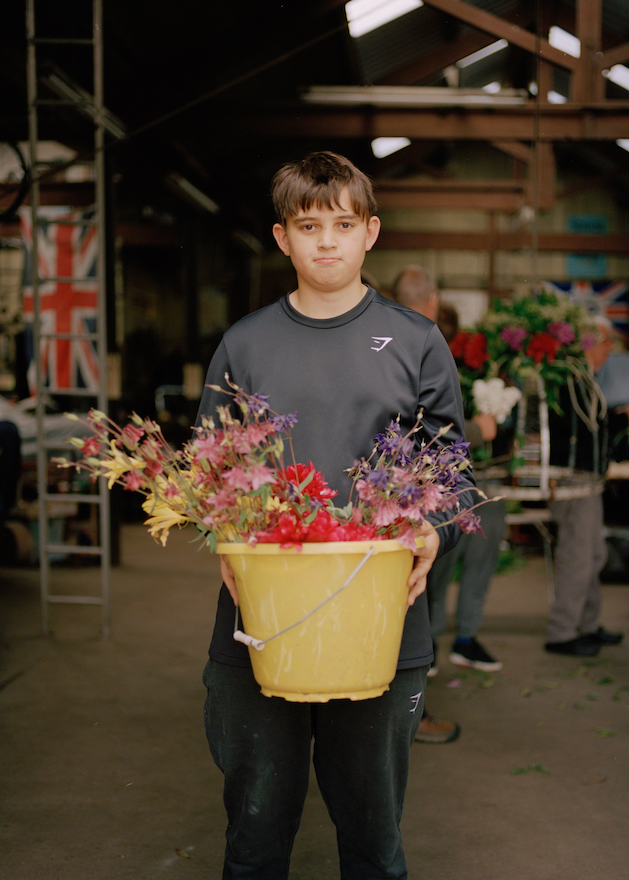
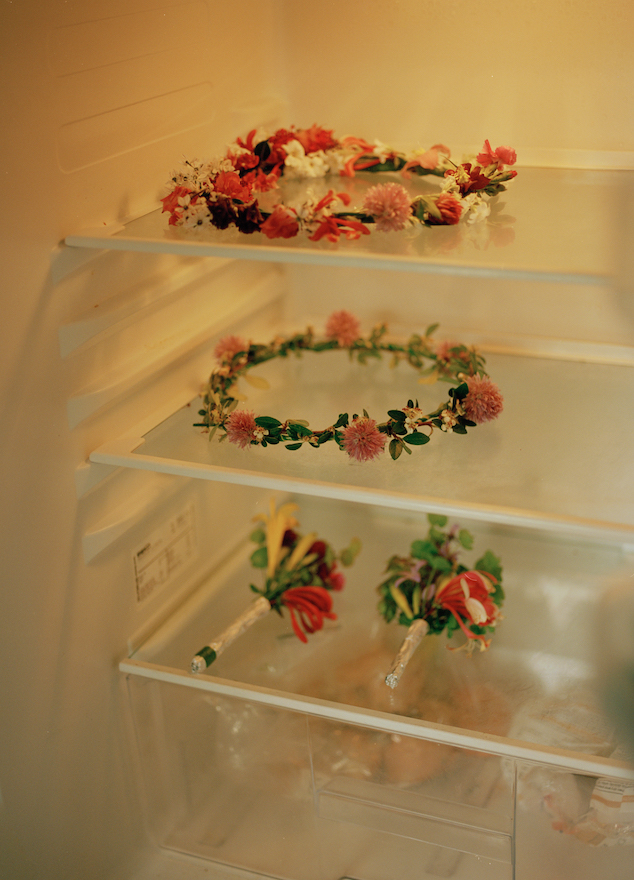
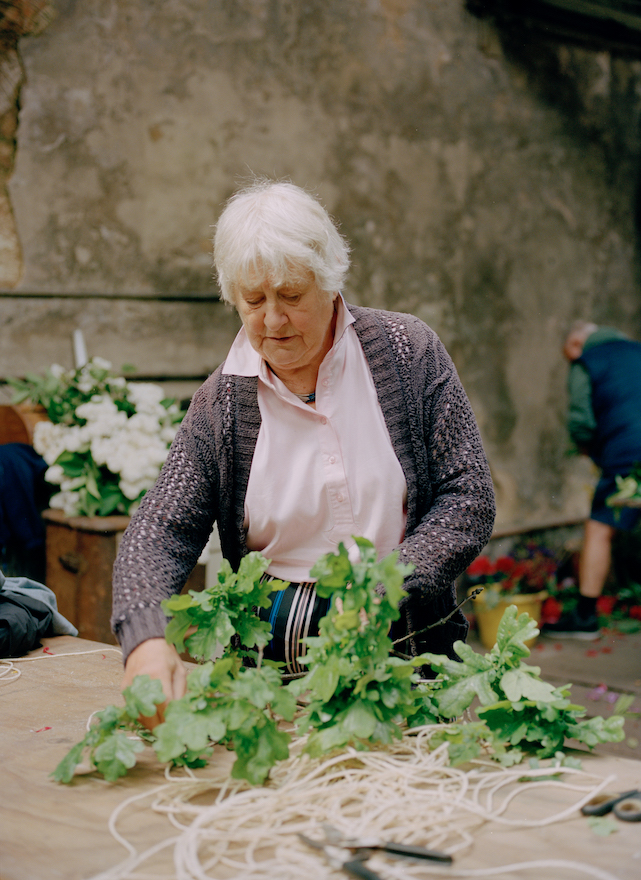

Sam and Dan finished their fine work at around 4pm. The Garland King mounts a white horse and the main garland is lowered onto him, the Queen Garland (which looks a bit like a head made of flowers) is placed on top of that. He is accompanied by a lady consort on horseback and at 6.30pm the pair lead the procession around the village bounds, stopping at each of the six pubs. Castleton Silver Band play the special Garland Tune (you’re going to hear that a lot), followed by the dancing girls. It rained solidly a few years ago but the kids still danced, folk are tough in these parts. After a spot of Maypole Dancing and a moving ceremony at the War Memorial, everyone returns to ‘all get pissed in the pub’ as one already tipsy local succinctly put it. Not for nothing did this used be called ‘baby night’. If you’re worried about the king being parched, rest assured he has just enough space under the garland to sneak a half pint of beer up it.
Maypoles have traditionally been regarded as a garlanded phallus (don’t google that) although sometimes it seems like every upright structure is. Even oak leaves have long been connected with fertility. George Long in his Folklore Calendar says that May is the ‘merry month’ and recalls children visiting every house singing ‘The 1st of May is Garland Day’. He also tells us that garlands of flowers or oak boughs have had links to May Day parades since the medieval era. So spring, growth, rebirth after a long winter, ‘let’s get it on woo hoo’, as Marvin Gaye sang.
Despite all this paganism and pole dancing, the Church plays a big role in Castleton’s Garland Day. The garland is eventually winched off the King up to the top of St Edmund’s church tower, where it still sits the next day. However, the church town collab hasn’t always run smoothly. According to a former Garland Day chairperson, in 1954 the Reverend Joseph Haydock, ‘the Vicar of Castleton, threw the Garland off the church tower because he said the whole lot was pagan.’ Having received a sign from above, he put a message on the town noticeboard suggesting people ‘get down on your knees and ask why it was done’. All deliciously Wickerman but strangely he was also on the garland committee and the cricket team. The devil within.
More modern challenges come from a shortage of young dancers for the street procession and the Maypole Dancing. The huge increase in tourism and holiday lets has meant a drop in the permanent population. Barely 250 people live in Castleton and only a small proportion are young people. ‘Don’t get me started on that’ said one of the garland making group, even the school is on the verge of closure and the Garland Day in Abbotsbury Dorset is much reduced for the same reason. Young boys are now allowed to dance, but although they joined rehearsals this year, they chicken’ed out on the day itself. One of the organisers felt a woman could never don the main garland as it’s too heavy for them but the England women’s rugby team might have something to say about that!
The Coracle was privileged to meet King John IV (the fourth king to have been called John of course) once the mighty garland was removed. He was revealed not to be a 60 year old farmer but a twenty-something mountain biker with piercings, tattoos, charm and a good bit of chat. His sister was consort and his mother before that but since this was his first year as King, so he was guided by the last King who ‘reigned’ for 20 years. Whilst talking to The Coracle over a bag of chips he reported spilling a bit of Guinness on his period costume but his mountain biking skills helped with balance on the horse under all that heft, even though he hadn’t ridden one before. It’s a less popular job than being the consort but for this King John it was ‘an honour and the icing on the cake’ after years of helping out in other roles. When asked about the stamina required he said with a cheeky smile ‘I’ve had worse jobs’.
The folklorist Roy Judge noted that these celebrations were not ‘a set, immutable pattern, but rather a fluid, moving process, which combined different elements at various times’. Despite the lack of dancing talent, Castleton seems to have a succession plan in place with younger people involved at its heart and flexibility possible in the proceedings rather than setting them in aspic. As Lauren Maccabee, the photographer who took these wonderful images says; ‘There is something really beautiful about the way customs and traditions evolve and change with time, and what it means to the places that have them’. Maybe the last word should go to the youngest dancer though, tiny Lily aged five, when asked what her favourite bit of the day was said; ‘this bit and the sweets’.
All images taken in 2022. See more of Lauren’s fantastic work here and here.
On the day deets can be found on the official Garland Day site and read more history here.
You can read about more folklore in Martin Green’s book or George Long’s.
Images by Lauren Maccabee. Words by The Coracle.
Every year for an unknown number of centuries, a man of Derbyshire gets decked in flowers, stuck atop a horse and paraded around a Peak District town, followed by a brass band and an assortment of dancing girls and boys.
The town of Castleton sits comfortably in a bowl of hills at the western end of the Hope Valley. Peveril Castle and Mam Tor hill fort keep watch over and surround it with history. Garland Day on May 29th is the town’s biggest event, bringing together hordes of locals and visitors. When walking down from the hills into town, excitement hangs in the air above it, people are out collecting foliage and flowers from the hedgerows and many are wearing little oak garlands pinned to their chests, even the dogs. It feels like Fair Day and there’s plenty of sunshine and warm beer although you can get an oat frappuccino if you really need one. Was it this busy in ancient times?
The day proper starts in a beautiful old motor garage that was once a dancehall, it’s here the collected greenery is brought and where the main garland (that’s the cone of flowers with a metal support structure) is made and placed on a Garland King. Derek has helped out for 60 years, having started when he was around 15, his sister is here making the Queen Garland which sits on top of the King’s head. Sam and Dan are much younger and seem to be doing most of the heavy lifting, ending up with blisters after four hours of making. Neither seems to know much about the history of Garland Day here and why should they? They know about the present, although maybe they’d just explained it to too many people that day.
For the rest of us, here’s some background. May 29th is Oak Apple Day or Royal Oak Day. Martin Green in his book ‘Curious Customs and Festivals’, suggests this might be a May Day custom transferred to Oak Apple Day in honour of Charles II’s Restoration, hence the costumes from that period. May 29th was also Charles’ birthday and the day he returned to London, after his exile on the continent. Charles escaped the parliamentarians by hiding in an oak tree. In other evidence, nearby Shillingstone’s Maypole Day is known to have moved from 1st May to also celebrate the Restoration. Parliamentarian prohibition turned maypole dancing into a symbol of resistance to the anti-monarchists, so moving the date to celebrate King Charles made sense, the King was back, festivals were back! Rock on.
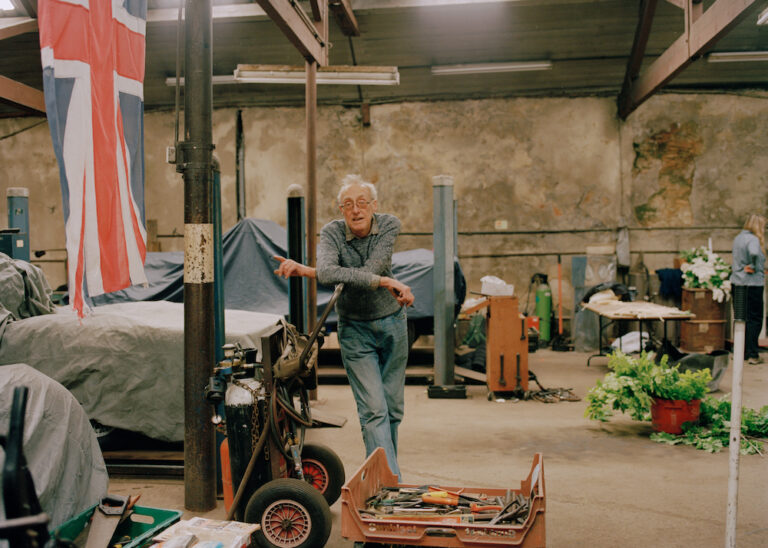
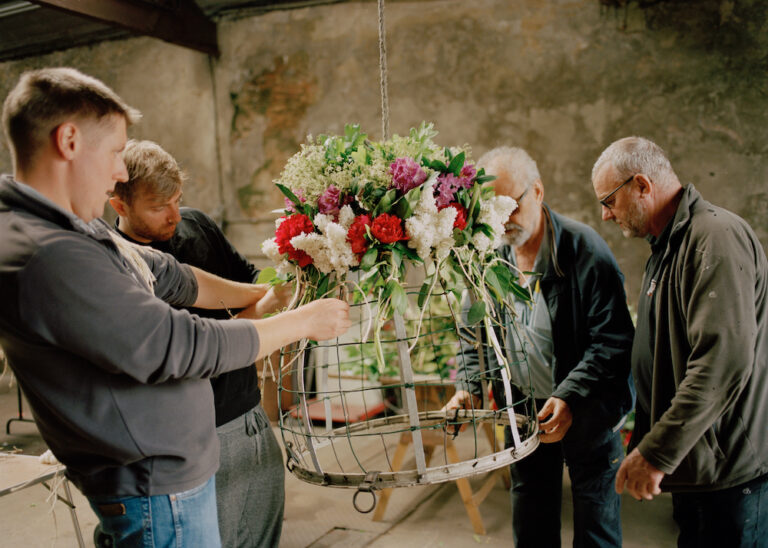
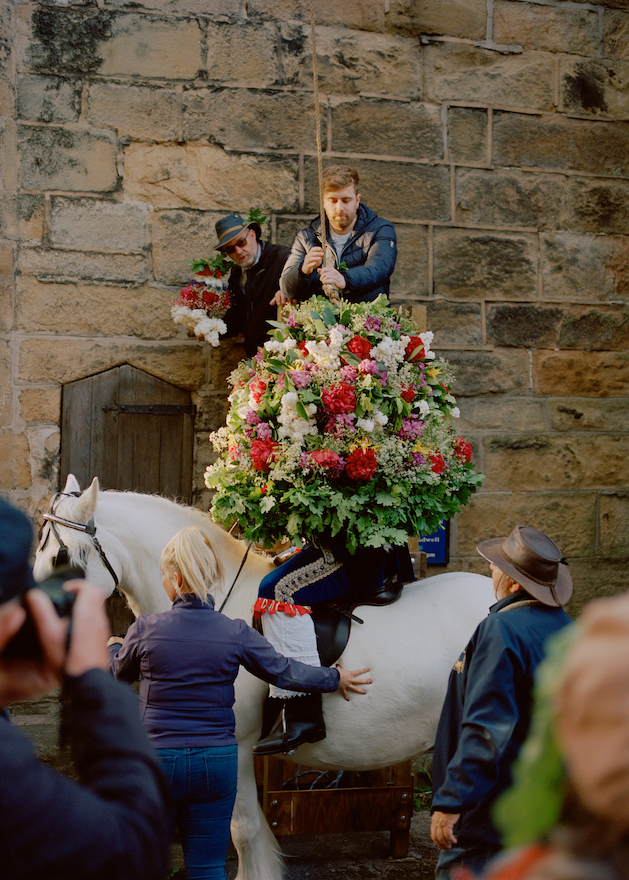
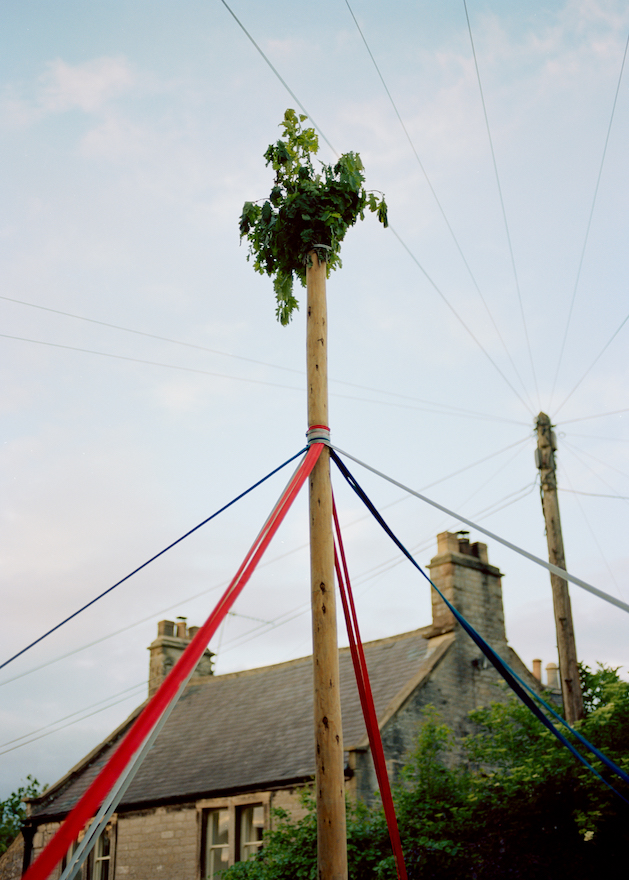

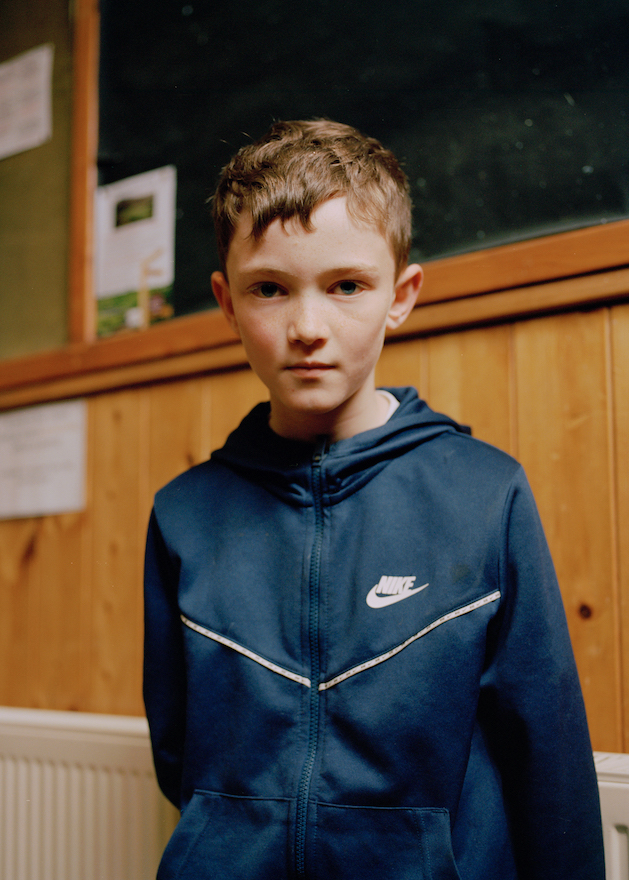
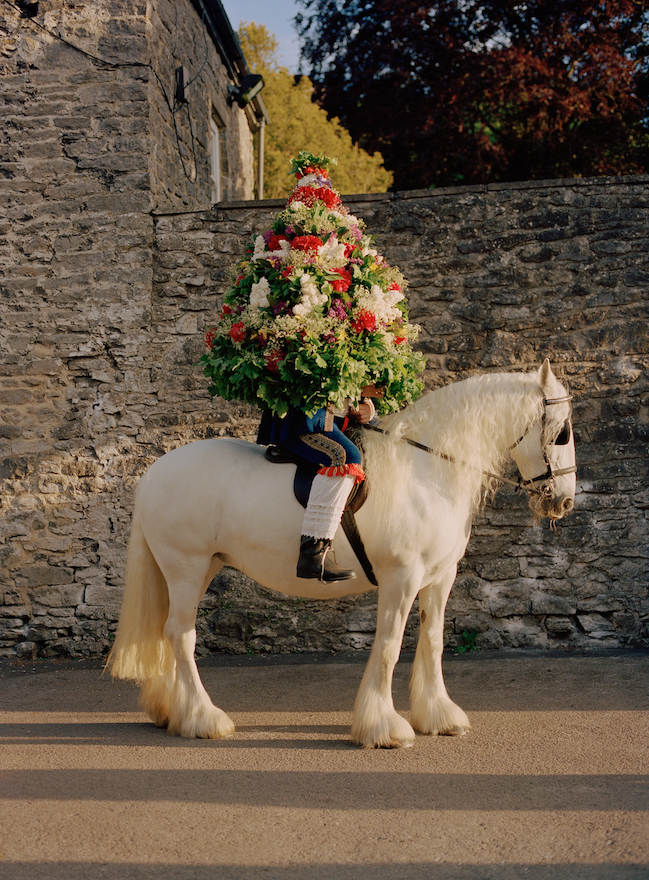
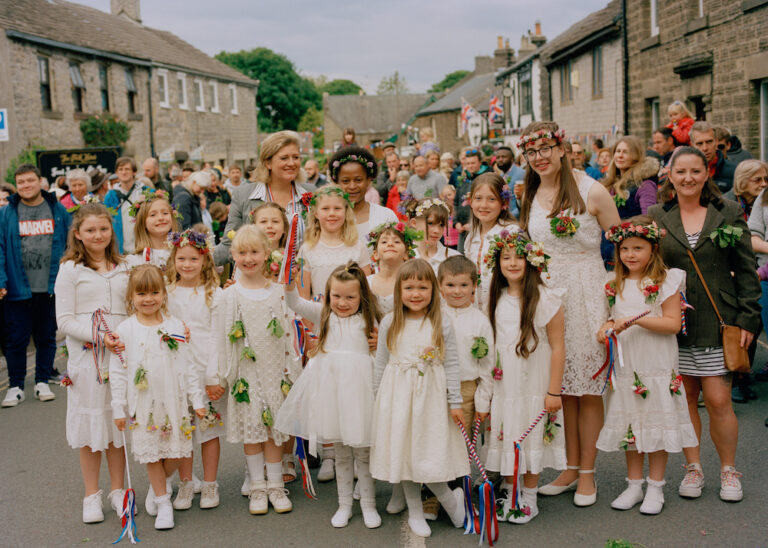
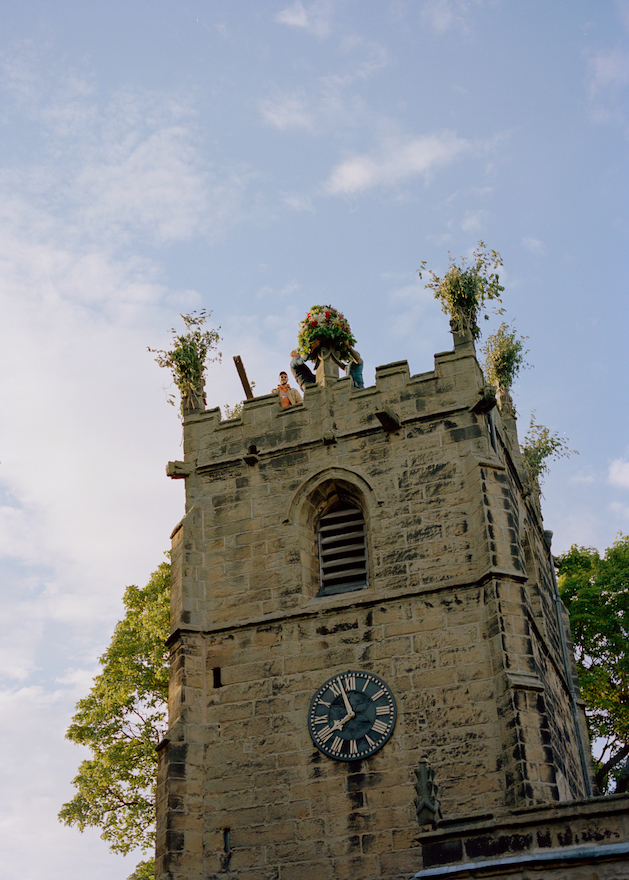

Images by Lauren Maccabee. Words by The Coracle.
Every year for an unknown number of centuries, a man of Derbyshire gets decked in flowers, stuck atop a horse and paraded around a Peak District town, followed by a brass band and an assortment of dancing girls and boys.
The town of Castleton sits comfortably in a bowl of hills at the western end of the Hope Valley. Peveril Castle and Mam Tor hill fort keep watch over and surround it with history. Garland Day on May 29th is the town’s biggest event, bringing together hordes of locals and visitors. When walking down from the hills into town, excitement hangs in the air above it, people are out collecting foliage and flowers from the hedgerows and many are wearing little oak garlands pinned to their chests, even the dogs. It feels like Fair Day and there’s plenty of sunshine and warm beer although you can get an oat frappuccino if you really need one. Was it this busy in ancient times?
The day proper starts in a beautiful old motor garage that was once a dancehall, it’s here the collected greenery is brought and where the main garland (that’s the cone of flowers with a metal support structure) is made and placed on a Garland King. Derek has helped out for 60 years, having started when he was around 15, his sister is here making the Queen Garland which sits on top of the King’s head. Sam and Dan are much younger and seem to be doing most of the heavy lifting, ending up with blisters after four hours of making. Neither seems to know much about the history of Garland Day here and why should they? They know about the present, although maybe they’d just explained it to too many people that day.
For the rest of us, here’s some background. May 29th is Oak Apple Day or Royal Oak Day. Martin Green in his book ‘Curious Customs and Festivals’, suggests this might be a May Day custom transferred to Oak Apple Day in honour of Charles II’s Restoration, hence the costumes from that period. May 29th was also Charles’ birthday and the day he returned to London, after his exile on the continent. Charles escaped the parliamentarians by hiding in an oak tree. In other evidence, nearby Shillingstone’s Maypole Day is known to have moved from 1st May to also celebrate the Restoration. Parliamentarian prohibition turned maypole dancing into a symbol of resistance to the anti-monarchists, so moving the date to celebrate King Charles made sense, the King was back, festivals were back! Rock on.




Sam and Dan finished their fine work at around 4pm. The Garland King mounts a white horse and the main garland is lowered onto him, the Queen Garland (which looks a bit like a head made of flowers) is placed on top of that. He is accompanied by a lady consort on horseback and at 6.30pm the pair lead the procession around the village bounds, stopping at each of the six pubs. Castleton Silver Band play the special Garland Tune (you’re going to hear that a lot), followed by the dancing girls. It rained solidly a few years ago but the kids still danced, folk are tough in these parts. After a spot of Maypole Dancing and a moving ceremony at the War Memorial, everyone returns to ‘all get pissed in the pub’ as one already tipsy local succinctly put it. Not for nothing did this used be called ‘baby night’. If you’re worried about the king being parched, rest assured he has just enough space under the garland to sneak a half pint of beer up it.
Maypoles have traditionally been regarded as a garlanded phallus (don’t google that) although sometimes it seems like every upright structure is. Even oak leaves have long been connected with fertility. George Long in his Folklore Calendar says that May is the ‘merry month’ and recalls children visiting every house singing ‘The 1st of May is Garland Day’. He also tells us that garlands of flowers or oak boughs have had links to May Day parades since the medieval era. So spring, growth, rebirth after a long winter, ‘let’s get it on woo hoo’, as Marvin Gaye sang.
Despite all this paganism and pole dancing, the Church plays a big role in Castleton’s Garland Day. The garland is eventually winched off the King up to the top of St Edmund’s church tower, where it still sits the next day. However, the church town collab hasn’t always run smoothly. According to a former Garland Day chairperson, in 1954 the Reverend Joseph Haydock, ‘the Vicar of Castleton, threw the Garland off the church tower because he said the whole lot was pagan.’ Having received a sign from above, he put a message on the town noticeboard suggesting people ‘get down on your knees and ask why it was done’. All deliciously Wickerman but strangely he was also on the garland committee and the cricket team. The devil within.
More modern challenges come from a shortage of young dancers for the street procession and the Maypole Dancing. The huge increase in tourism and holiday lets has meant a drop in the permanent population. Barely 250 people live in Castleton and only a small proportion are young people. ‘Don’t get me started on that’ said one of the garland making group, even the school is on the verge of closure and the Garland Day in Abbotsbury Dorset is much reduced for the same reason. Young boys are now allowed to dance, but although they joined rehearsals this year, they chicken’ed out on the day itself. One of the organisers felt a woman could never don the main garland as it’s too heavy for them but the England women’s rugby team might have something to say about that!
The Coracle was privileged to meet King John IV (the fourth king to have been called John of course) once the mighty garland was removed. He was revealed not to be a 60 year old farmer but a twenty-something mountain biker with piercings, tattoos, charm and a good bit of chat. His sister was consort and his mother before that but since this was his first year as King, so he was guided by the last King who ‘reigned’ for 20 years. Whilst talking to The Coracle over a bag of chips he reported spilling a bit of Guinness on his period costume but his mountain biking skills helped with balance on the horse under all that heft, even though he hadn’t ridden one before. It’s a less popular job than being the consort but for this King John it was ‘an honour and the icing on the cake’ after years of helping out in other roles. When asked about the stamina required he said with a cheeky smile ‘I’ve had worse jobs’.
The folklorist Roy Judge noted that these celebrations were not ‘a set, immutable pattern, but rather a fluid, moving process, which combined different elements at various times’. Despite the lack of dancing talent, Castleton seems to have a succession plan in place with younger people involved at its heart and flexibility possible in the proceedings rather than setting them in aspic. As Lauren Maccabee, the photographer who took these wonderful images says; ‘There is something really beautiful about the way customs and traditions evolve and change with time, and what it means to the places that have them’. Maybe the last word should go to the youngest dancer though, tiny Lily aged five, when asked what her favourite bit of the day was said; ‘this bit and the sweets’.
All images taken in 2022. See more of Lauren’s fantastic work here and here.
On the day deets can be found on the official Garland Day site and read more history here.
You can read about more folklore in Martin Green’s book or George Long’s.









